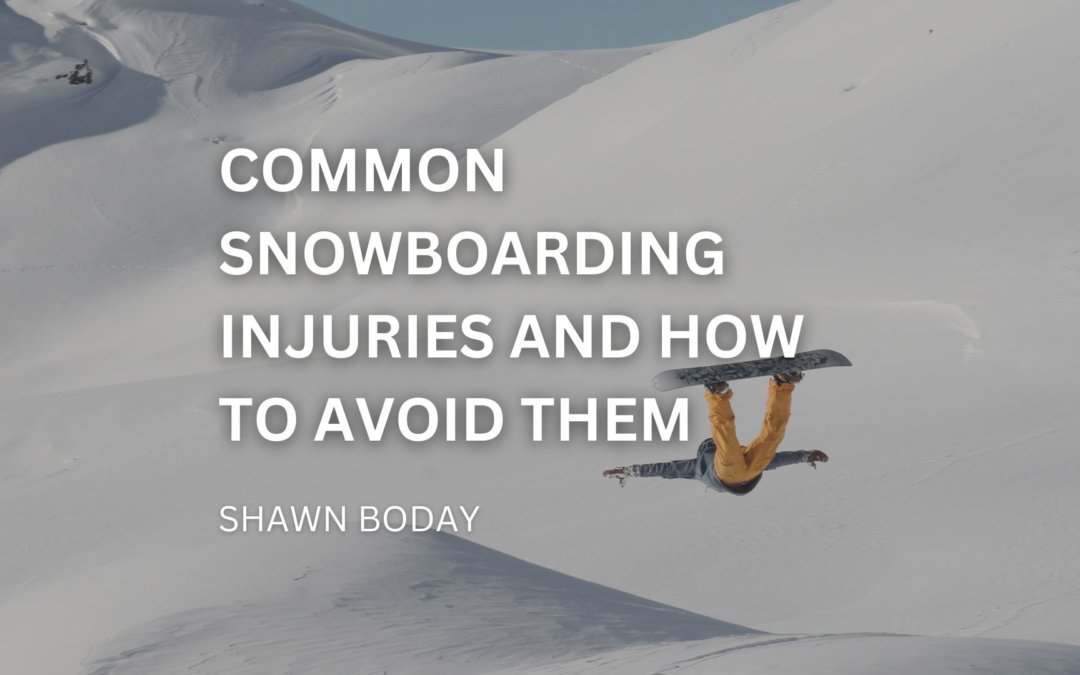Since gaining recognition in the 1960s, snowboarding has become an immensely popular and internationally recognized winter sport enjoyed by many people around the world. It is, however, an activity that involves an elevated level of risk, as riders are traveling down snowy slopes at high speeds. Therefore, it is important for those involved to take appropriate safety measures to reduce the risk of injury. Despite this, accidents still occur.
Common injuries sustained by snowboarders can include sprains and fractures to the wrist, shoulder and neck injuries, as well as injuries to the head and spine. When a snowboarder falls, it is common for them to hit the ground with their hands, knees, shoulders, or head. This is due, in part, to the restricted movement of their legs as their feet are secured to the board, resulting in limited options to reduce impact. To help prevent such injuries, being aware of the risks and practicing proper techniques are important to avoid these common snowboarding injuries.
Knee/ACL Injuries
Knee injuries, such as ACL tears, may be less common among snowboarders compared to skiers due to the advancement of snowboard boots and bindings, but these injuries are still very common. To prevent injuries, a warm-up and cool-down before and after riding is important, as well as doing knee exercises that help prepare the body for quick reactions and off-balance movements. Additionally, snowboarders should wear good knee pads and make sure their equipment fits their size and weight properly. If an injury does occur, a supportive knee brace can help reduce pain and discomfort.
Ankle Sprains
An ankle sprain can be caused by a variety of factors, such as overuse of the ligament, wrong boots and bindings, and falling. When jumping, extra pressure and inversion applied to the small bones in the foot and ankle joint can result in an ankle injury. To reduce the risk of injury, choose boots that fit snugly and provide adequate ankle support. Hybrid boots, which offer certain flexibility, are becoming increasingly popular. If an ankle injury does occur, it is important to reduce swelling and compress the area, and use ankle support once the inflammation has gone down Furthermore, doing ankle-strengthening exercises can help to prepare the body for movement on the mountain.
Shoulder Dislocations/Fractures/Separations
Snowboarders commonly suffer shoulder injuries such as dislocations, fractures, and separations when a person lands the wrong way. To prevent such injuries, practicing how to fall properly can greatly reduce the potential of injury. Learn to fall the right way by practicing movements similar to those that would be attempted on the slopes beforehand in order to avoid or decrease the severity of shoulder injuries. Moreover, using proper techniques, wearing protective gear, and learning to fall correctly when snowboarding can help reduce the chances of sustaining injuries to the shoulders.
Spinal Injuries
In recent years, spinal injuries have become more prevalent among snowboarders, primarily due to the increasing number of people attempting jumps. Jumping is the main reason snowboarders sustain injuries to the spine, with falls being the second most frequent cause. In the case of a jump going wrong, the rider may land in an awkward position or suffer a violent backward fall, both of which can cause the force to be transmitted to the spine. To minimize the risk of such an injury, snowboarders should not attempt any jumps or tricks that are beyond their skill level and always practice caution when launching themselves off jumps. It is recommended to learn the correct technique and practice off the mountain first before trying any jumps or tricks on the slopes.
Wrist, Hand or Thumb Injuries
Falling while snowboarding, particularly for beginners, is a common cause of wrist fractures and hand injuries. Beginner snowboarders will instinctively try to break a fall with their outstretched hands, which can cause the bones in the wrist to break or result in a sprain. In addition to wrist injuries, using the hands to prevent a fall can transmit the force along the arm and cause shoulder or elbow injuries. A complex wrist fracture increases the chances of long-term disability and osteoarthritis. To avoid such injuries, beginner snowboarders should not skip professional instruction; doing so can result in learning how to fall the hard way. Wearing wrist guards and keeping the hands in a fist position when falling are easy and effective ways to protect against fractures and sprains. By taking the necessary precautions, snowboarders can enjoy the sport safely without getting hurt.

